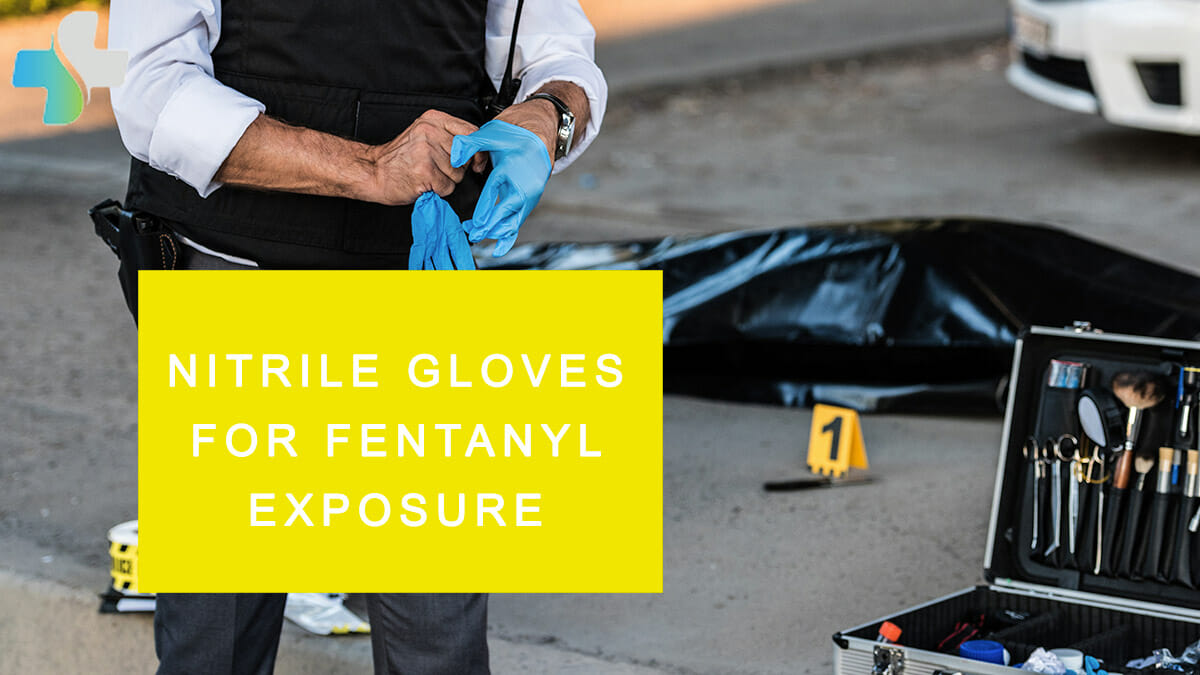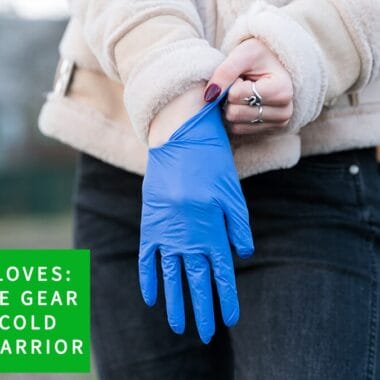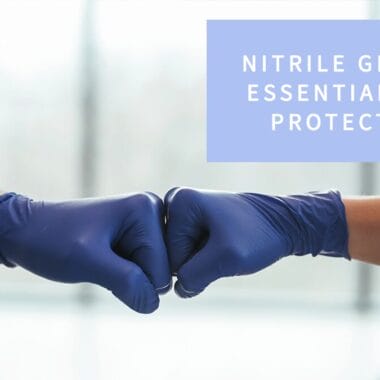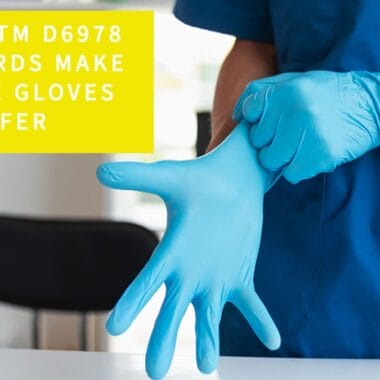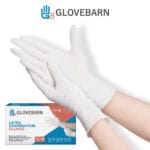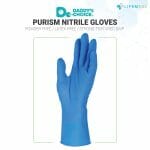First responders, such as firefighters, police officers, emergency medical technicians (EMTs), and paramedics, face unique challenges while on the job. They experience traumatic accidents, crime, life-or-death situations, and illicit drugs. As an emergency responder, avoiding specific incidents, including contact with illegal drugs, is almost impossible. With the proper personal protective equipment (PPE) gloves, first responders can prevent and limit exposure to illicit drugs such as cocaine, methamphetamines, cannabinoids, and fentanyl. Fentanyl exposure amongst emergency responders is significantly common, considering the circumstances of their job duties.
What Is Fentanyl?
Fentanyl is a synthetic opioid similar to morphine but is significantly more potent. While fentanyl is a prescription drug, it is also made and used illegally. It’s typically used to treat patients with severe pain, especially after surgery or for patients with chronic pain. A few fentanyl prescriptions are known as Actiq, Duragesic, and Sublimaze. The illicitly manufactured and distributed form is often mixed with heroin or cocaine, significantly amplifying its potency and potential dangers.
Because of its high potency, the risk of overdose with fentanyl is very high, especially if someone is not already tolerant to high levels of opioids. A fentanyl overdose can quickly result in respiratory depression (slowed breathing) and death. Illegally produced fentanyl has significantly contributed to the opioid epidemic in the United States and overdose deaths. Fentanyl is often mixed with other drugs, like heroin or cocaine, without the user’s knowledge.
Wearing Nitrile Gloves to Prevent Fentanyl Exposure for First Responders
According to the Centers for Disease Control and Prevention (CDC), wearing nitrile gloves when in contact with illicit drugs is mandatory to help prevent exposure to fentanyl. Emergency responders are at a higher risk for fentanyl exposure due to specific situations they face on the job. Fentanyl exposure for first responders is common through inhalation or mucous membrane absorption of the drug if aerosolized rather than through ingestion or percutaneous exposure (e.g., needlestick).
Nitrile gloves are an essential type of personal protective equipment (PPE) for various industries, particularly healthcare, where they help to reduce the risk of exposure to harmful substances and infections. Although it would require a significant amount of fentanyl to cause an overdose through inhalation or mucous membrane absorption, first responders must wear proper personal protective equipment (PPE) while on the job. Even small amounts of fentanyl exposure can cause disorientation, coughing, sedation, and respiratory distress. Wearing nitrile gloves provide a layer of protection between first responders and exposure to fentanyl and other illicit substances. Personal protective equipment (PPE) gloves are vital for protecting first responders and others from coming in direct contact with fentanyl.
What Are Nitrile Gloves?
Nitrile gloves are made of synthetic rubber, providing first responders optimal protection and promoting safety from risk or danger while on the job. The versatile features of nitrile gloves make them the best type of PPE for preventing fentanyl exposure for first responders. Nitrile rubber is more resistant to chemicals, oils, and other substances than natural rubber (latex) or vinyl gloves. This chemical and oil resistance makes them a better barrier against drugs like fentanyl, which can be absorbed through the skin.
The durability of nitrile gloves makes them more resistant to punctures and tears than latex or vinyl gloves. This is essential when handling sharp objects or when the glove integrity may be compromised. The fit and comfort of nitrile gloves offer comfortability for extended wear, which is often necessary for first responders. Nitrile gloves are latex-free and free from allergens for first responders with latex allergies or sensitivities.
The National Institute for Occupational Safety and Health (NIOSH) recommends using nitrile gloves, as they have been shown to resist permeation and breakthrough by fentanyl for up to four hours. However, it’s important to remember that gloves are not a stand-alone solution and should be part of a comprehensive strategy to protect against fentanyl exposure. This includes using other personal protective equipment (PPE), safe handling procedures, proper training, and emergency protocols.
How Nitrile Gloves Provide Protection Against Fentanyl
Nitrile gloves are CDC recommended for protecting first responders from fentanyl exposure due to their unique blend of properties. Fentanyl can be absorbed through the skin, making direct contact with the substance potentially hazardous. As a synthetic material, nitrile offers superior chemical resistance against various substances, including fentanyl. This makes nitrile gloves highly effective as a barrier to prevent skin absorption of the drug.
Nitrile’s superior chemical resistance means that nitrile gloves are often safe to use in environments exposed to hazardous substances, including strong detergents, greases, oils, and illicit drugs like fentanyl. Frequent glove changes for first responders are mandatory when exposed to or handling fentanyl on the job. Nitrile gloves’ excellent durability and puncture resistance are crucial in emergencies where first responders may encounter sharp objects or debris. Compared to latex or vinyl gloves, nitrile gloves provide a more reliable protective barrier, reducing the risk of punctures or tears that could expose the first responders’ skin to fentanyl.
Precautions and Proper PPE for Fentanyl Exposure
While personal protective equipment (PPE) gloves, such as nitrile, are essential for preventing fentanyl exposure, receiving education and training on the risks and precautions of fentanyl can help keep first responders safe. Emergency responders being trained to identify the symptoms of opioid overdose can help practice safety hazards. Nitrile gloves should be worn at all times when handling illicit drugs and should be changed properly when exposed. Additional PPE for fentanyl exposure may include respiratory protection when powdered illegal substances are present. The NIOSH recommends avoiding contact with the eyes, nose, or mouth after touching any surfaces contaminated with fentanyl. After removing your gloves, wash your hands with soap and water after working in the contaminated area.
However, it’s important to remember that nitrile gloves are part of a comprehensive protective strategy. While they provide significant protection, they should be used alongside other personal protective equipment (PPE), proper training, and established emergency protocols to ensure maximum safety from fentanyl exposure for first responders.
References:
- Centers for Disease and Control. The National Institute for Occupational Safety and Health (NIOSH): Fentanyl: Emergency Responders at Risk.
- TN Department of Mental Health and Substance Abuse Services. Overdose Prevention: Guide to Fentanyl Exposure.
- Centers for Disease and Control, 2023. The National Institute for Occupational Safety and Health (NIOSH): Illicit Drug Tool-Kit for First Responders.
- Drug Enforcement Administration (DEA). Fentanyl Safety Recommendations for First Responders.

